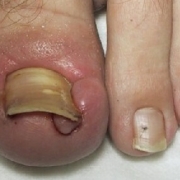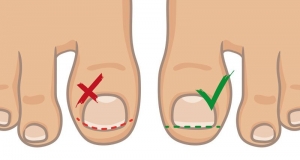FIT FEET FOR A BETTER YOU!
Take the first steps to get back on track
The human foot is a marvel of biomechanical engineering that most of us take for granted until the system fails or breaks down. The average person will walk the equivalent of twice around the world in a lifetime, which is a long time on your feet.
Tips to Maintain Healthy Feet
Inspect your feet regularly and pay attention to changes in color, texture or appearance.
Maintain good foot hygiene, including washing and drying between the toes. Hydrate the skin. Australian weather and open shoes can cause rapid loss of moisture from the skin and may result in cracking or the formation of fissures. It is helpful to replace the moisture content by using lotions or creams on a regular basis.
Hydrate the skin. Australian weather and open shoes can cause rapid loss of moisture from the skin and may result in cracking or the formation of fissures. It is helpful to replace the moisture content by using lotions or creams on a regular basis.

Buy proper-size shoes. You may not wear the same size in shoes made by different manufacturers. Purchase new shoes late in the day, when feet tend to be at their largest. Always buy the shoes that feel the best.
Don’t ignore foot pain Symptoms that increase or do not resolve within a reasonable period of time need to be evaluated by your podiatrist. Podiatrists get you moving, pain free and living an active life.

Cut toenails straight across. Never cut into the corners — this could cause an ingrown toenail. Gently file away sharp corners or rough edges with an emery board.
Exercise – Walking is a great way to keep weight under control and is an excellent conditioner for the feet. Be sure to wear appropriate athletic shoes when exercising.
Alternate your shoes each day. Since the feet have sweat glands, your shoes will absorb moisture from your feet, so it is important to allow your shoes to dry out completely. Avoid walking barefoot to help protect your feet from injury and infection
Avoid walking barefoot to help protect your feet from injury and infection
Put sunblock on your feet while wearing sandals during the day to avoid sunburn.
Source: UCLA Health System, Happy Feet Plus, foothealthaustralia.org.au
If you are experiencing pain or discomfort, please call us today for an appointment on 5223 1531
THIS INFORMATION IS FOR EDUCATIONAL PURPOSES ONLY AND IS NOT INTENDED TO REPLACE PROFESSIONAL PODIATRIC ADVICE. TREATMENT WILL VARY BETWEEN INDIVIDUALS DEPENDING UPON YOUR DIAGNOSIS AND PRESENTING COMPLAINT. AN ACCURATE DIAGNOSIS CAN ONLY BE MADE FOLLOWING PERSONAL CONSULTATION WITH A PODIATRIST.


